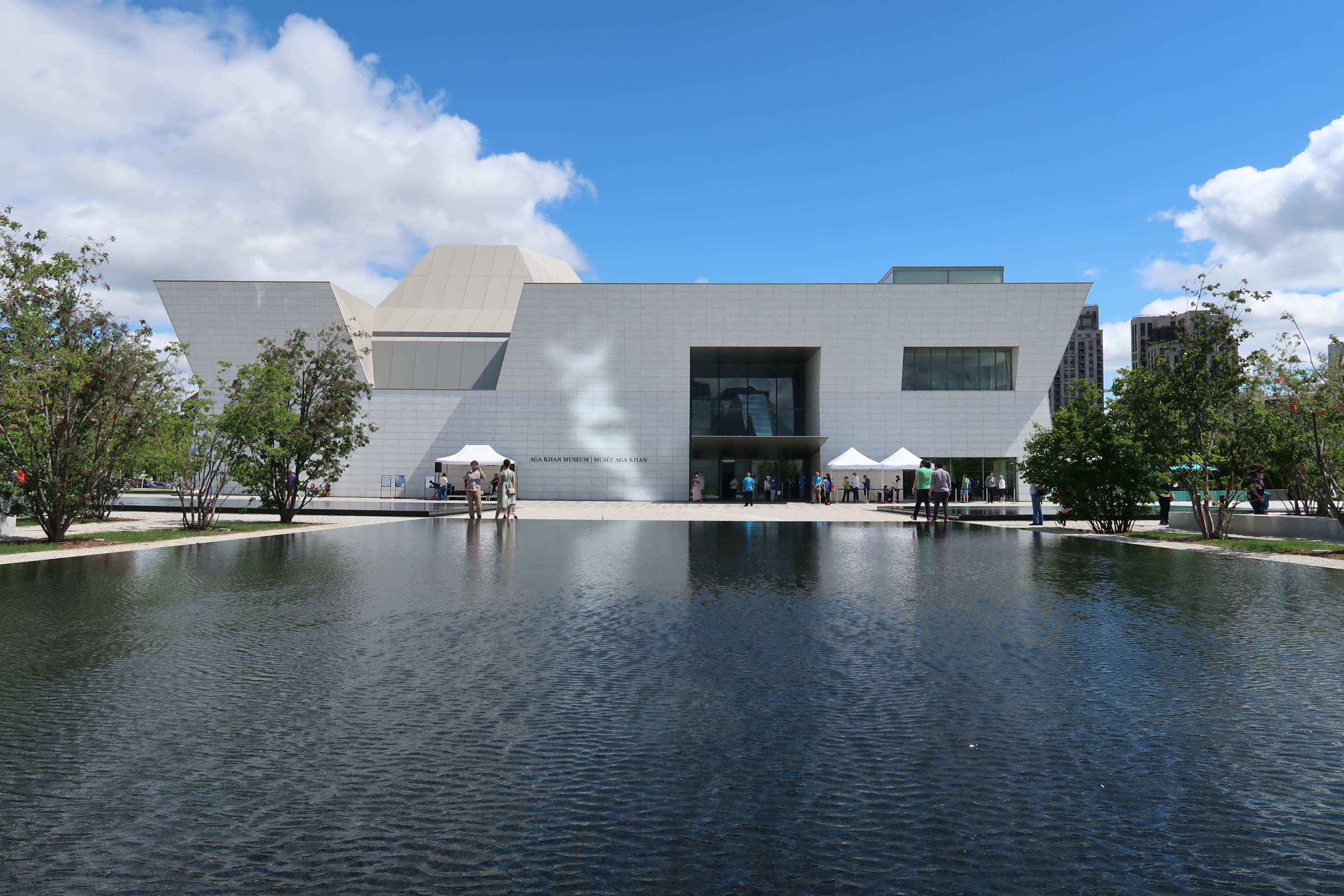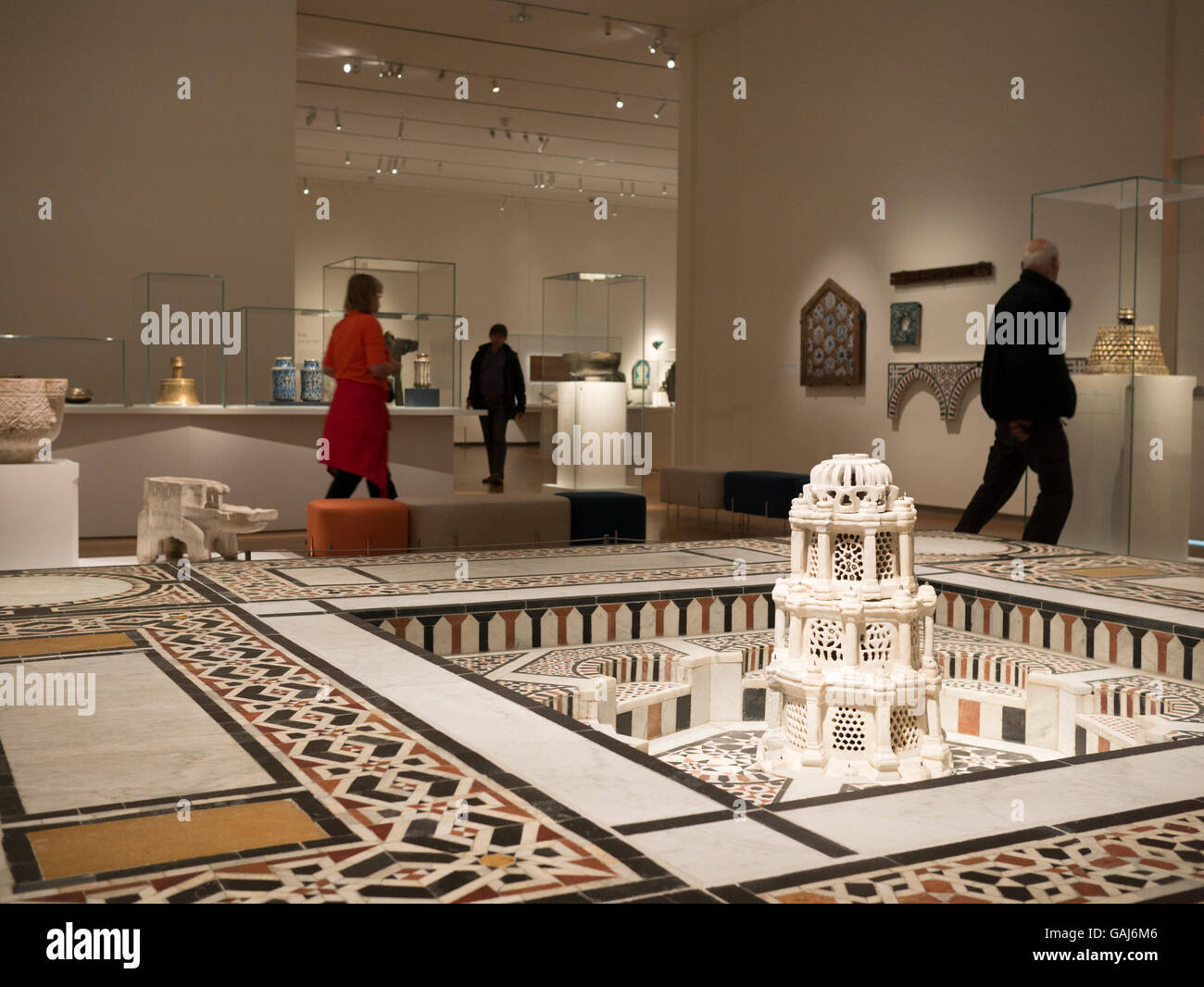Browsing Aga Khan Museum Entrance: Your Guide to the Key Hall
Browsing Aga Khan Museum Entrance: Your Guide to the Key Hall
Blog Article
Explore the Rich Cultural Heritage at Aga Khan Gallery: Discover the Marvels of Islamic Art and Society
Snuggled in the heart of Toronto, the Aga Khan Museum stands as a testimony to the abundant cultural heritage of Islamic art and culture. As visitors tip into this building sanctuary, they are transported to a world where elegance and spirituality link perfectly. The museum's collection showcases a diverse array of masterpieces, from the elaborate art of calligraphy to the captivating textiles and rugs that tell tales of ancient traditions. It is within these wall surfaces that can truly value the pottery tradition of Islamic human being via its exquisite ceramics, or explore the understandings of Islamic literature and scholarship with the lit up manuscripts on display screen. The Aga Khan Gallery offers a trip of discovery, inviting visitors to check out the marvels of Islamic art and culture that continue to astound and influence.
Museum Architecture: A Sanctuary of Islamic Layout
The Aga Khan Museum showcases an exceptional mix of modern architecture and standard Islamic layout, developing a sanctuary that embodies the charm and grandeur of Islamic society. The gallery's architecture is a testament to the rich heritage and creative practices of the Islamic world.
Designed by popular architect Fumihiko Maki, the Aga Khan Gallery stands as a sensational architectural masterpiece. The building's exterior includes a series of interlacing geometric patterns, showing the intricacy and precision that are trademarks of Islamic layout. Making use of light and darkness produces a thrilling result, stimulating a sense of tranquility and tranquility.
Inside the gallery, visitors are greeted by a roomy and light-filled atrium, adorned with intricate calligraphy and geometric patterns. Using products such as timber, sedimentary rock, and marble more improves the sense of sophistication and splendour.
The gallery's galleries are thoughtfully created to display a varied collection of Islamic art, including ceramics, manuscripts, textiles, and paintings. Each gallery is very carefully curated to provide a comprehensive understanding of the social significance and creative achievements of Islamic worlds throughout history.
Along with the main structure, the Aga Khan Museum additionally includes magnificently designed gardens, offering visitors with a peaceful outside space to link and mirror with nature.
Work Of Arts of Islamic Calligraphy
Elegant examples of Islamic calligraphy grace the halls of the Aga Khan Museum, showcasing the mastery and virtuosity of this ancient form of created expression. Islamic calligraphy holds a considerable area in the Islamic artistic custom, serving as a means to magnificently convey the words of the Quran and various other spiritual texts.
The Aga Khan Gallery is home to an amazing collection of calligraphic jobs, including pieces from numerous historical durations and areas. These work of arts show the diversity and development of Islamic calligraphy gradually. Visitors can wonder at the detailed and exact strokes, the unified arrangement of letters, and the sophisticated structures that make each piece an aesthetic delight.
Islamic calligraphy is not simply a form of attractive art; it is likewise a spiritual method. The calligrapher should possess not only technological ability but additionally a deep understanding of the spiritual texts they are recording. With their job, calligraphers aim to communicate the appeal and power of the magnificent word.
The Aga Khan Gallery's collection of Islamic calligraphy uses site visitors a distinct possibility to value and recognize this old art type. It allows us to explore the abundant social heritage and the profound importance of calligraphy in the Islamic world. Via these masterpieces, we can get a much deeper understanding right into the appeal and spirituality of Islamic art and culture.

Textiles and Carpets: A Tapestry of Islamic Artistry
Featuring an exciting screen of detailed styles and thorough workmanship, the Aga Khan Gallery takes site visitors on a journey right into the globe of Islamic virtuosity through its collection of fabrics and carpets. These impressive fabrics and rugs showcase the abundant social heritage of Islamic civilizations and offer a glimpse into the artistic customs that have actually been passed down via generations.
Textiles and rugs hold a considerable place in Islamic art, not only for their visual appeal but likewise for their cultural and historic importance. They played a vital role in Islamic cultures, acting as attractive items in homes, churches, and even as status icons. The Aga Khan Museum's collection includes a vast array of carpetings and fabrics, each representing different durations and areas of the Islamic world.
The textiles on display attribute splendid patterns and concepts, typically influenced naturally, geometric shapes, and calligraphy. These designs display the proficiency of Islamic artisans that fastidiously wove complex patterns utilizing numerous weaving strategies. The carpetings, on the other hand, mesmerize visitors with their elaborate styles and lively colors. They use a sense of heat and convenience, mirroring the value of carpetings in Islamic cultures as petition carpets and signs of friendliness - Aga Khan Museum entrance.

Ceramics: The Ceramic Tradition of Islamic Civilization
With an abundant background covering throughout Islamic civilizations, the Aga Khan Gallery showcases the elaborate pottery custom that has prospered throughout the Islamic globe. Ceramics have played a substantial duty in Islamic art and culture, offering both practical and ornamental functions (Aga Khan Museum address). The pottery practice of Islamic world is identified by its outstanding craftsmanship, beautiful styles, and varied styles
Islamic porcelains incorporate a vast array of forms, including vessels, floor tiles, and architectural components. These objects display an impressive degree of accuracy and focus to detail, mirroring the mastery of Islamic potters. The techniques used in the creation of Islamic ceramics differ, with some items being wheel-thrown, while others are built or hand-built. Polishing and decoration strategies, such as underglaze paint, lustreware, and calligraphy, better improve the beauty and intricacy of these ceramics.
Among the distinctive functions of Islamic pottery is its usage of floral and geometric motifs. These designs are usually influenced naturally, with aspects such as blossoms, leaves, and creeping plants being intricately woven right into the patterns. Islamic porcelains additionally include calligraphic engravings, which can be religious in nature or convey poetic knowledgeables.
The Aga Khan Gallery houses a comprehensive collection of Islamic ceramics, supplying visitors with a chance to discover the rich heritage and imaginative accomplishments of Islamic potters. Through these porcelains, one can obtain insight right into the social, historic, and technical advancements of Islamic world, along with value the appeal and workmanship of these exceptional artworks.
Lit Up Manuscripts: Insights Into Islamic Literature and Scholarship
Islamic illuminated manuscripts supply useful insights right into the literary works and scholarship of Islamic people. These manuscripts are perfectly crafted masterpieces that integrate calligraphy, minis, and ornamental aspects to produce aesthetically magnificent books. They were produced by knowledgeable scribes and artists that meticulously copied and showed vital texts, consisting of the Quran, Hadiths, poetry, and scientific treatises.
One of the most famous examples of Islamic illuminated manuscripts is the Shahnama, or Book of Kings, which is an epic composed by the Persian poet Ferdowsi in the 10th century. This manuscript is decorated with detailed minis that portray scenes from the tales and tales contained within the rhyme. It not just gives a look into the literary traditions of the Islamic globe however likewise discloses the imaginative techniques and styles of the moment.
Islamic illuminated manuscripts likewise played a considerable function in the transmission of knowledge and concepts. They were often made use of as instructional devices, with the text and pictures serving as a means of conveying complex ideas and ideas. These manuscripts were highly valued and treasured by scholars and intellectuals, who recognized their relevance in preserving and sharing understanding.
Final Thought
To conclude, the Aga Khan Museum offers a fascinating trip with the rich cultural heritage of Islamic art and culture - Aga Khan Museum arts. From its stunning design to the masterpieces of calligraphy, fabrics, ceramics, and brightened manuscripts, the museum offers beneficial insights into the diverse customs and success of Islamic human being. It is a true oasis of Islamic layout and a must-visit for any person curious about exploring the wonders of this lively and influential culture
It is within these walls that one can genuinely value the pottery custom of Islamic human being via its charming ceramics, or dive right into the insights of Islamic literary works and scholarship via the illuminated manuscripts on display screen.The Aga Khan Museum's collection of Islamic calligraphy provides visitors an one-of-a-kind possibility to value and recognize this old art type.With an abundant history spanning across Islamic people, the Aga Khan Gallery showcases the elaborate ceramic practice that has flourished throughout the Islamic globe.Islamic illuminated manuscripts provide useful understandings right into the literature and scholarship of Islamic human being.In verdict, the Aga Khan Museum uses an exciting trip with the rich social heritage of Islamic art and culture.
Please visit one of our local supporters - The Repair Store Iphone No Touch North York
Report this page